DJI Mini 4 Pro
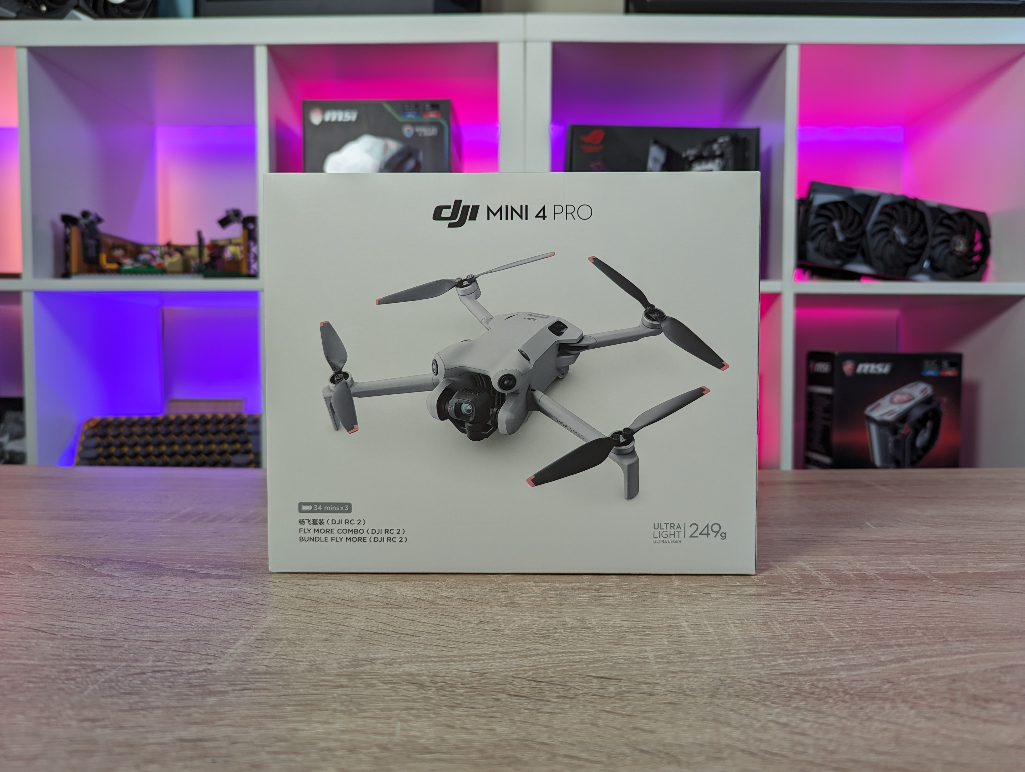
Specifications
- Takeoff Weight: < 249 g
- Dimensions:
- Folded (without propellers): 148×94×64 mm (L×W×H)
- Unfolded (with propellers): 298×373×101 mm (L×W×H)
- Max Ascent Speed:
- 5 m/s (S Mode)
- 5 m/s (N Mode)
- 3 m/s (C Mode)
- Max Descent Speed:
- 5 m/s (S Mode)
- 5 m/s (N Mode)
- 3 m/s (C Mode)
- Max Horizontal Speed (at sea level, no wind):
- 16 m/s (S Mode)
- 12 m/s (N Mode)
- 12 m/s (C Mode)
- Max Flight Time: 34 minutes (with Intelligent Flight Battery)
- Max Hovering Time: 30 minutes (with Intelligent Flight Battery)
- Internal storage: 2 GB
- Camera
- Image Sensor: 1/1.3-inch CMOS
- Effective Pixels: 48 MP
- Lens
- FOV: 82.1°
- Format Equivalent: 24 mm
- Aperture: f/1.7
- Focus: 1 m to ∞
- Stabilization: 3-axis mechanical gimbal (tilt, roll, pan)
- Sensing Type: Omnidirectional binocular vision system, supplemented with a 3D infrared sensor at the bottom of the aircraft
Above is an excerpt from the very long list of specifications on DJI's website for the Mini 4 Pro drone. A very important detail is that the total weight is under 250 grams. This means that it falls into the most flexible category and can therefore be flown in most places.
A tour around the DJI Mini 4 Pro
If you know drones from DJI, then you also know their design, which is instantly recognizable. This of course also applies to the DJI Mini 4 Pro, which is confusingly similar to the last few drones I've seen from DJI. This time, however, it's just in a smaller size, which is a very important detail for how useful a drone is.
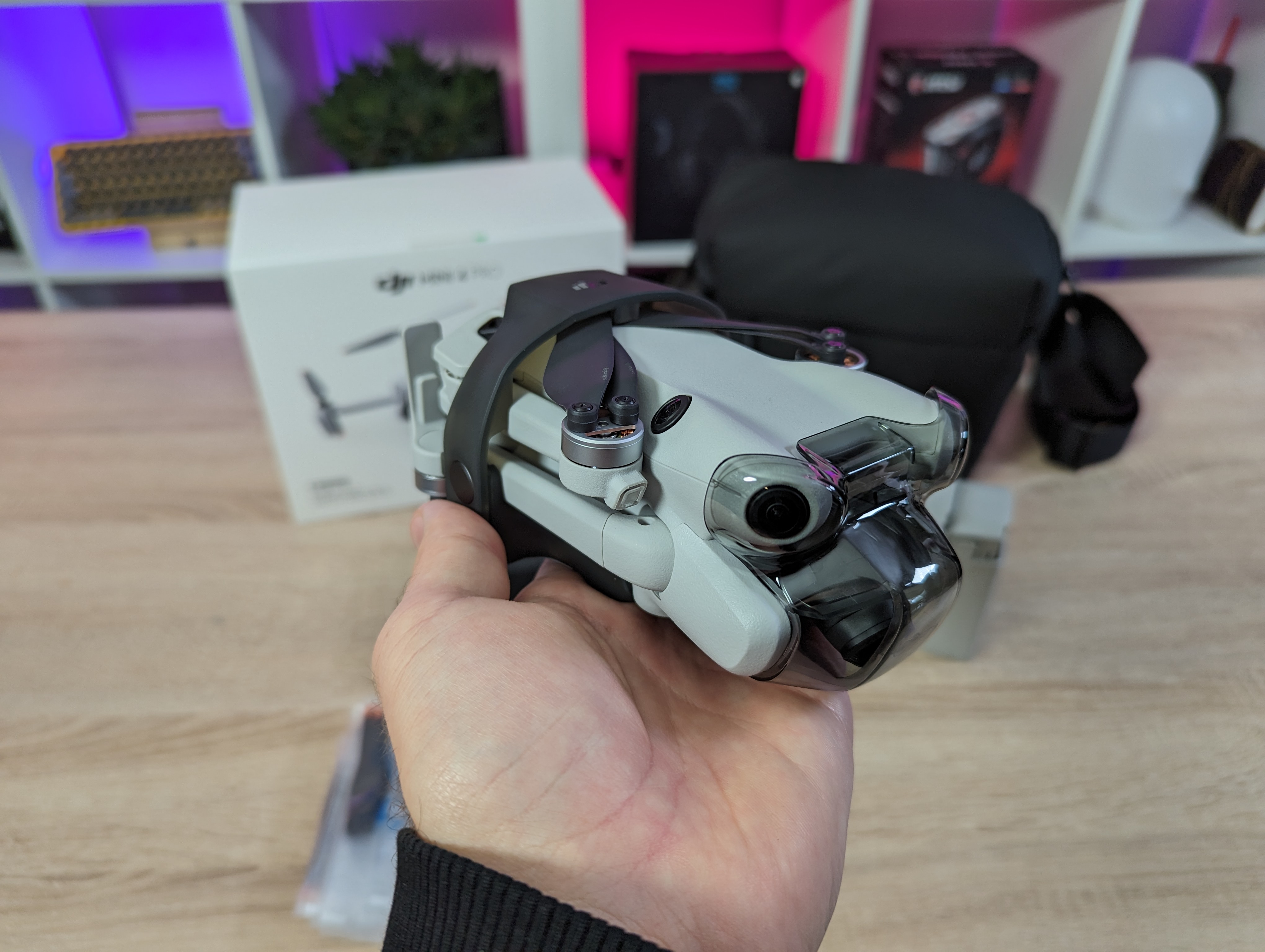
The DJI Min i 4 Pro is foldable and does not take up much space in its folded version. It can be held in the hand or in a pocket if necessary, which of course facilitates storage and transport.
The front of the drone is characterized by the camera, which is mounted in a 3-axis mechanical gimbal, which makes sure to keep things stable during flight to ensure good, clear images.
You get a 1/1.3" CMOS sensor and an f/1.7 lens with a viewing angle of 82.1°, roughly equivalent to a 24 mm lens.
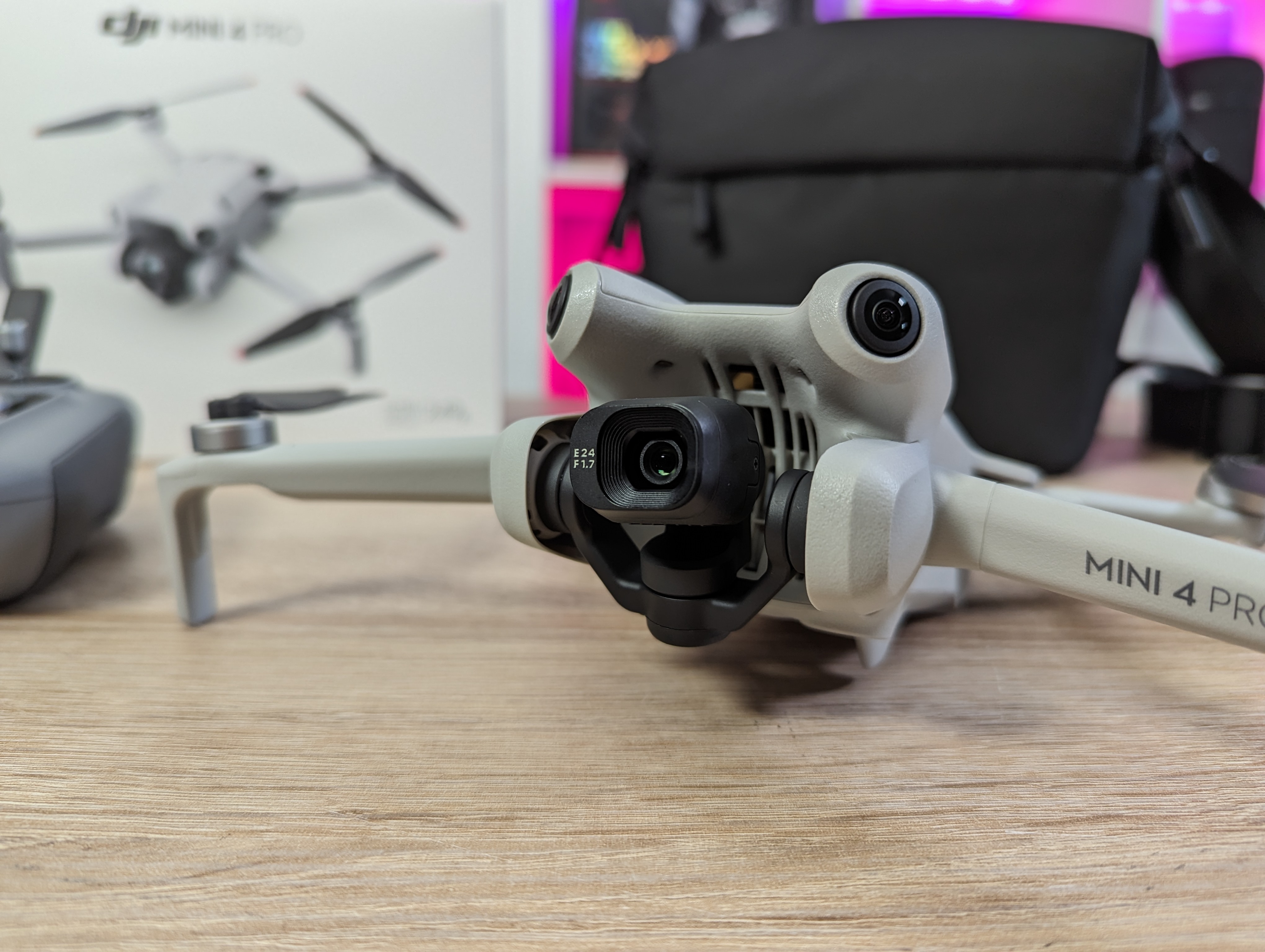
It is possible to record in 4K up to 100 FPS or 1080p up to 200 FPS. There is also the option of 10-bit color and HLG/D-Log M, if you want to have as much control as possible over the colors in your post-production. With a Bitrate of up to 150 Mbps, it should be possible to get good pictures out of the camera despite the small size.
In the front, we can also see another important detail, which is the sensors. There is one set in the front, one that points to the rear, and another at the bottom of the drone. Together, they scan the surroundings and can help to avoid flying into obstacles on the road.
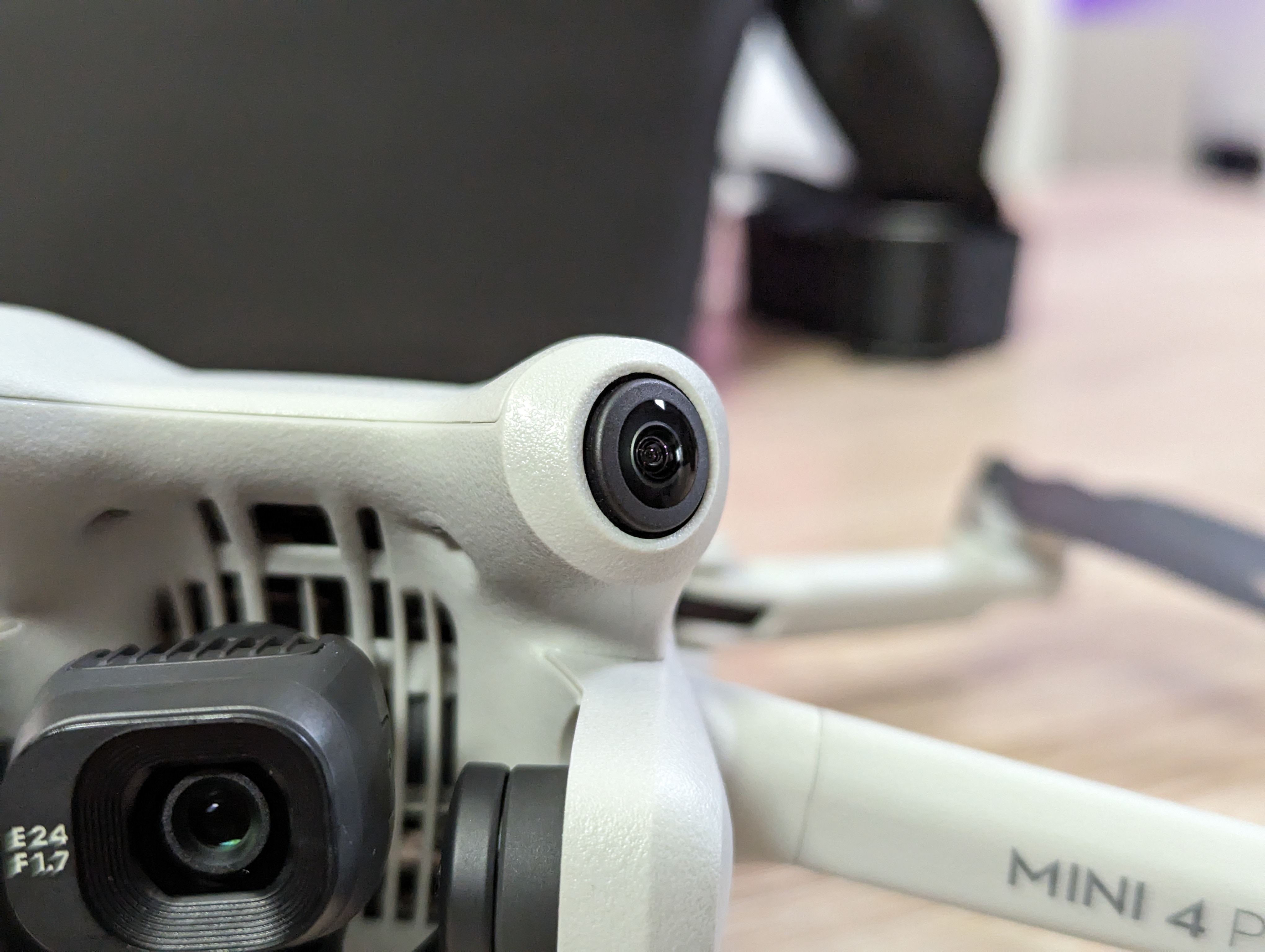
DJI themselves call the Mini 4 Pro their most advanced Mini Video Drone to date. The sensors that make sure to avoid obstacles on the road manage, together with features such as ActiveTrack and a host of other smart features, that the Mini 4 Pro should be easy to use even for beginners.
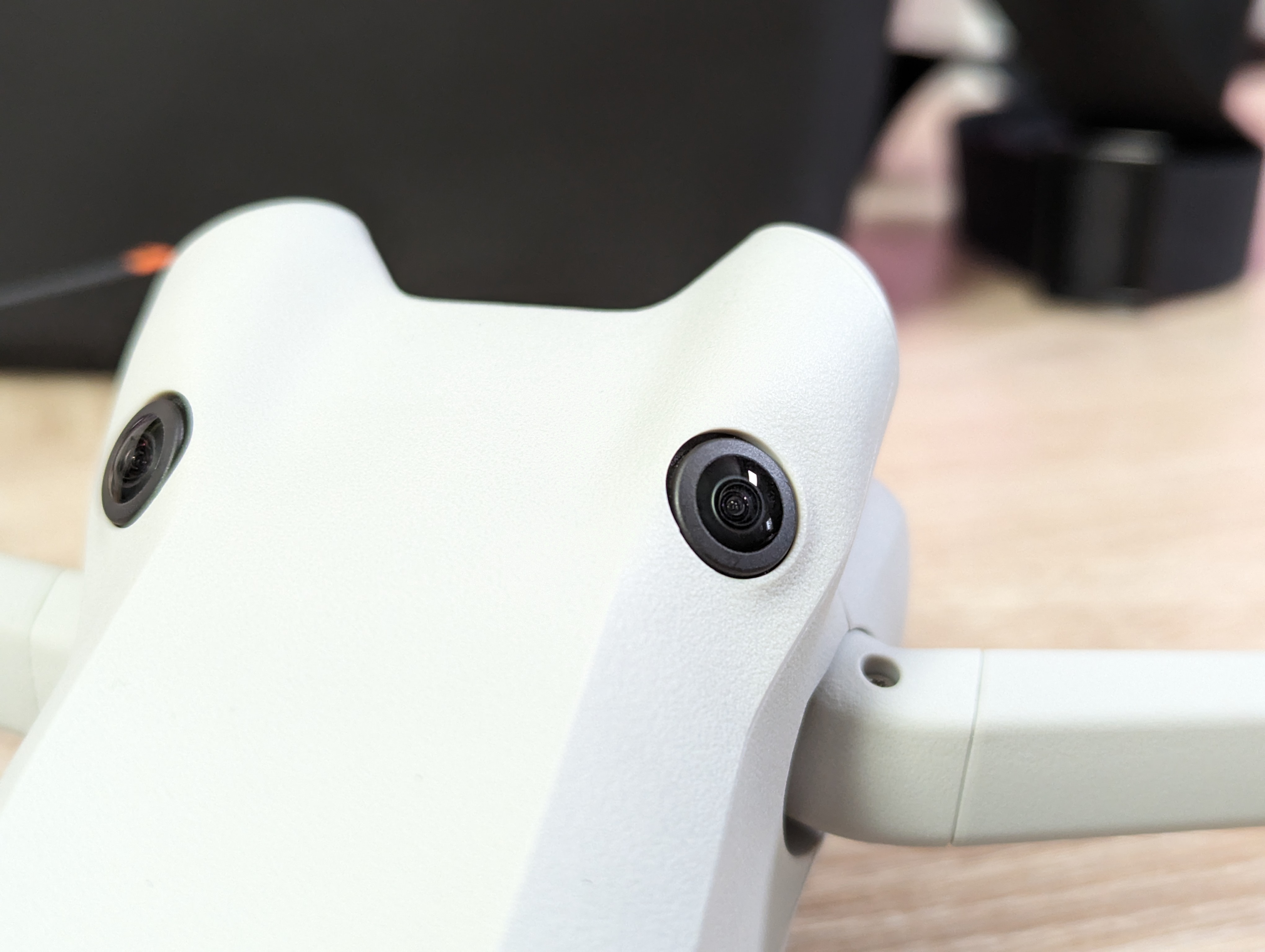
At the back of the drone we find the battery and this is also where there is room for a MicroSD card. There is 2GB of internal storage in the Mini 4 Pro, but with the formats in which it is possible to record, they will not last long. Therefore, it pays to look for a MicroSD card if you want to record video in high quality. With the possibility of recording in 4K up to 100 FPS and 150 Mbps, it should also be a fast MicroSD card. DJI has a list of recommended cards on their website.
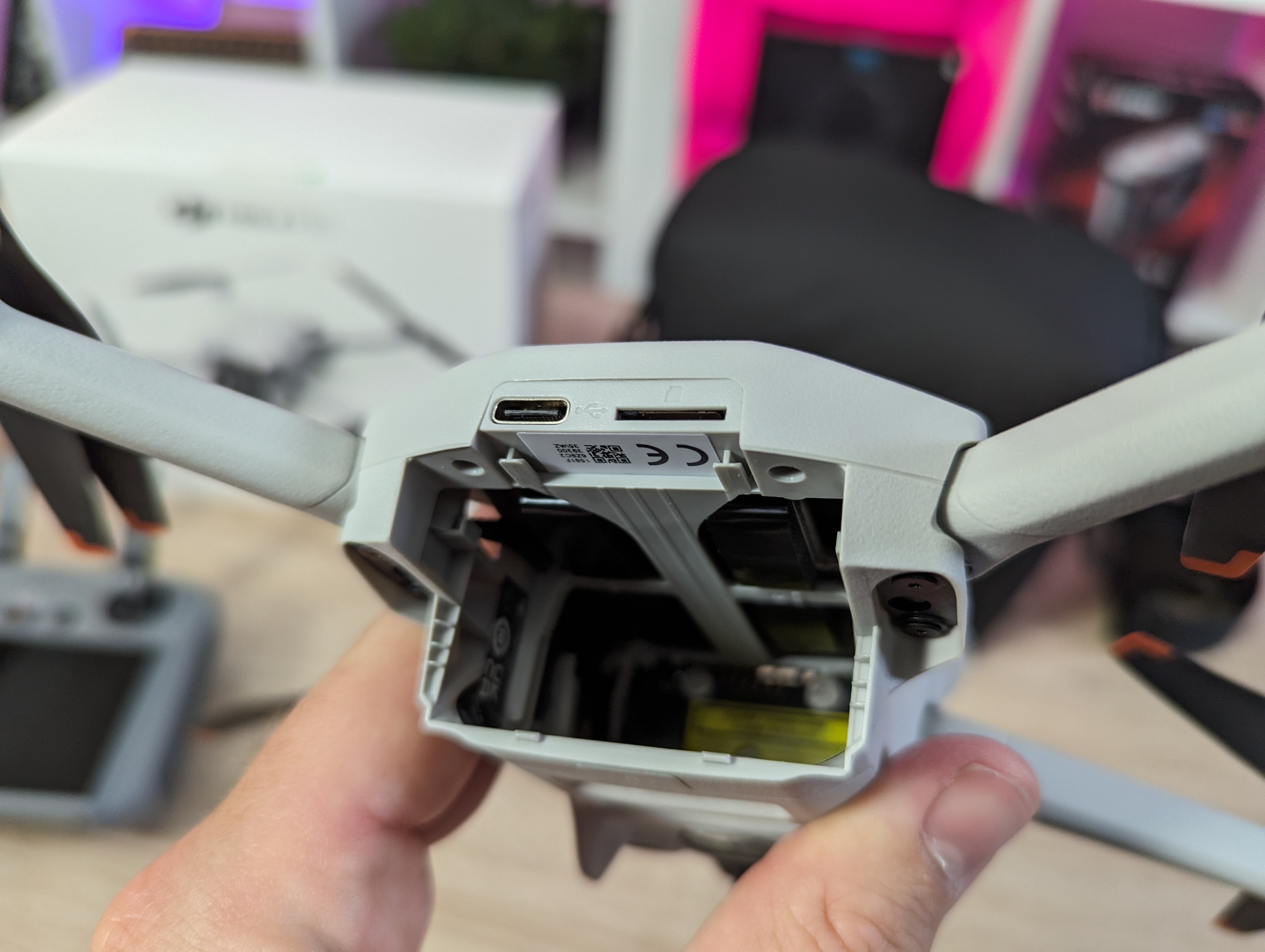
We have received the Mini 4 Pro in a Fly More Combo that includes a selection of additional equipment. Together with the drone, you get two extra batteries and a charging hub, which can charge all three included batteries at the same time. In addition to that, the set also comes with the new DJI RC 2 controller and a transport bag to keep it all in.
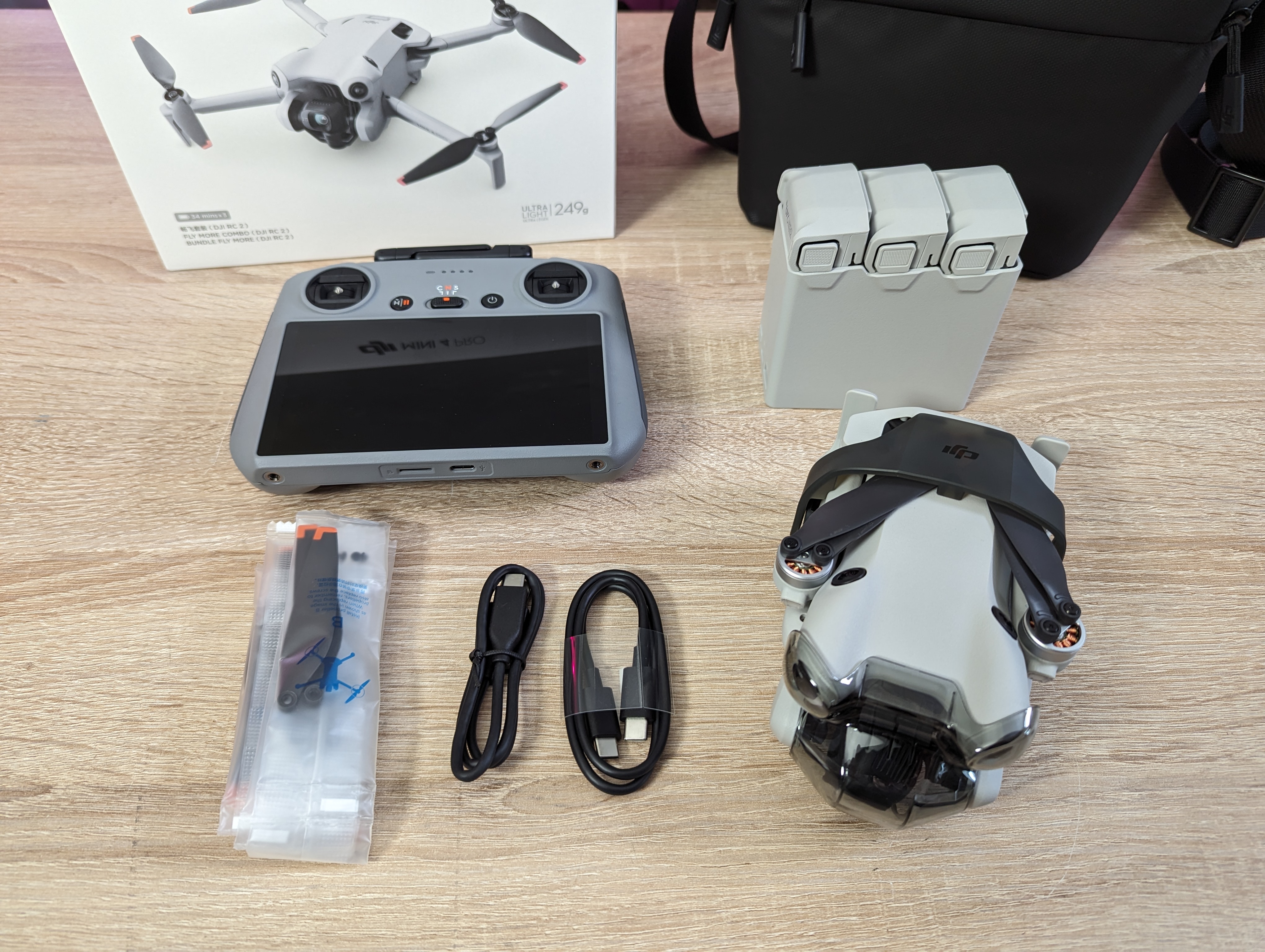
The controller that comes with the DJI Mini 4 Pro is the new DJI RC 2 controller. It has a 5.5" Full HD screen on the front and has been upgraded with a new, more powerful chipset. This means that it is better equipped to handle the control of your drone.
The antenna system has also been upgraded, which can be seen with two external antennas that can be folded out. It is a new 2T4R system where there are two transmitters and four receivers in the controller.
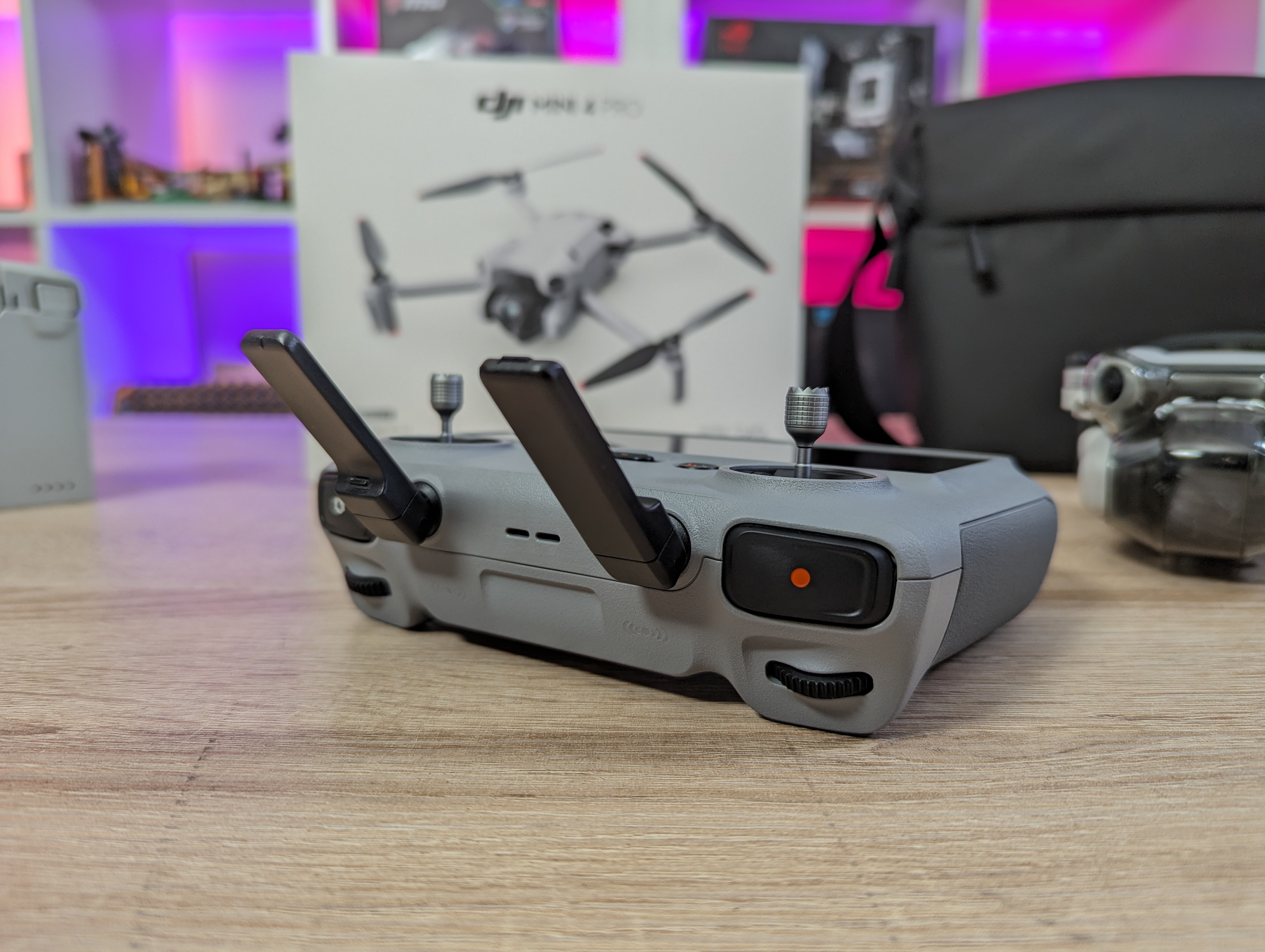
All of this should hopefully lead to better video and signal transmission, between controller and drone with a range of up to 20km.
As an added bonus, there is also 32 GB of internal storage in the RC 2 controller.
Software:
The software on which a large part of the interaction with your DJI Mini 4 Pro drone will take place is the DJI Fly app, which can be found on its smartphone, or as in our case on the DJI RC 2 device.
It is from here that you can control a large part of the functions that are built into the DJI Mini 4 Pro. The steering itself is of course done with the two joysticks. However, all adaptations of settings and setup of which parameters you want to fly take place through the DJI Fly software.
The drone has a range and options that go beyond the current legislation in Denmark and the EU. So it is up to you to check yourself that the settings for, for example, height, etc., are set so that they comply with the rules.
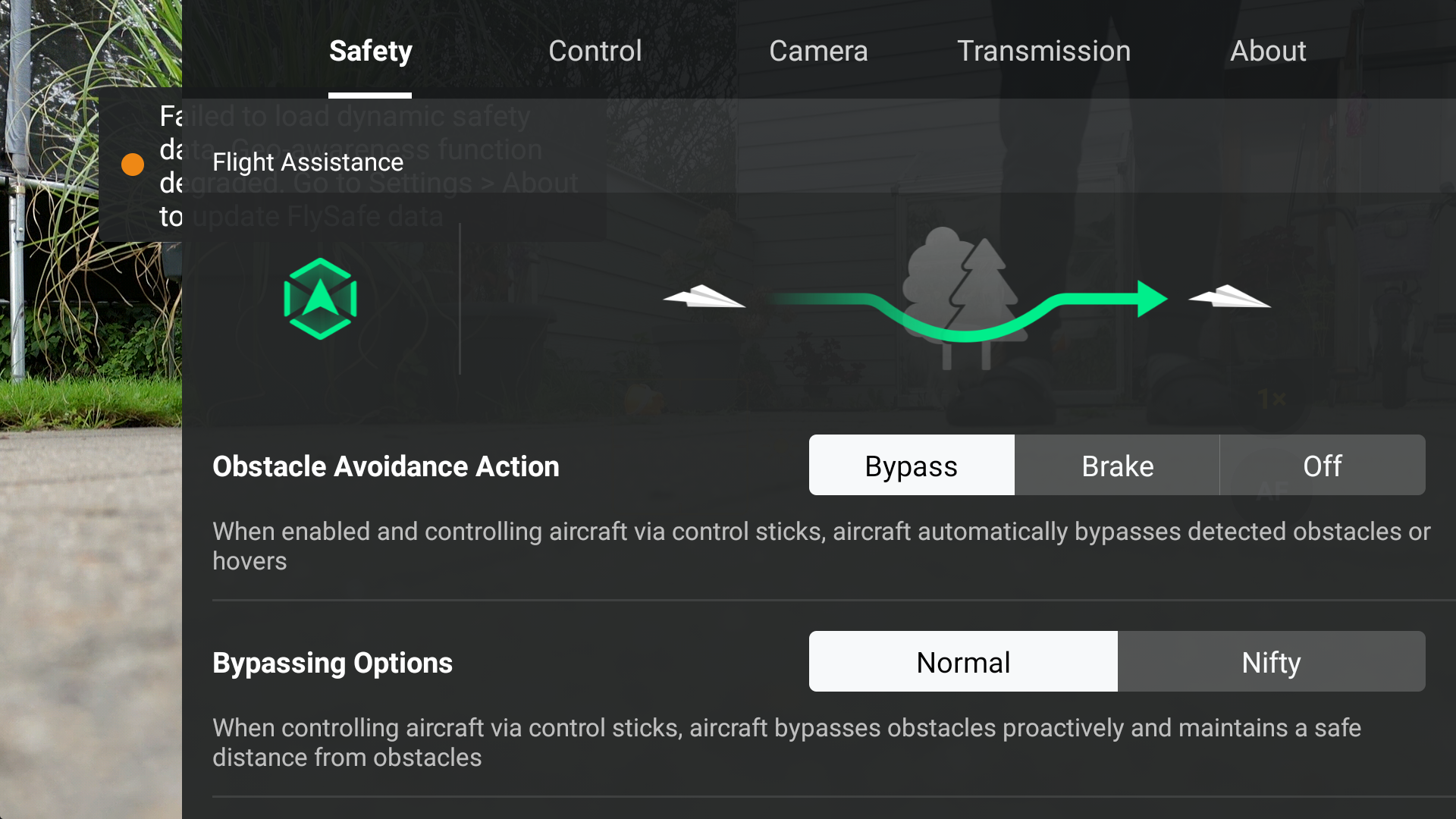
In the same way, you can specify how the drone should behave when it encounters obstacles in its path.
You can also set a ton of different things around the cameras and the gimbal that keeps it all stable.
During flight, there are a number of different status indicators that tell you things like how far the drone is from you and how much battery time is left.
In addition to the option to set the drone to avoid obstacles itself, there are also a number of other good automated functions. This includes automatic take off and landing.
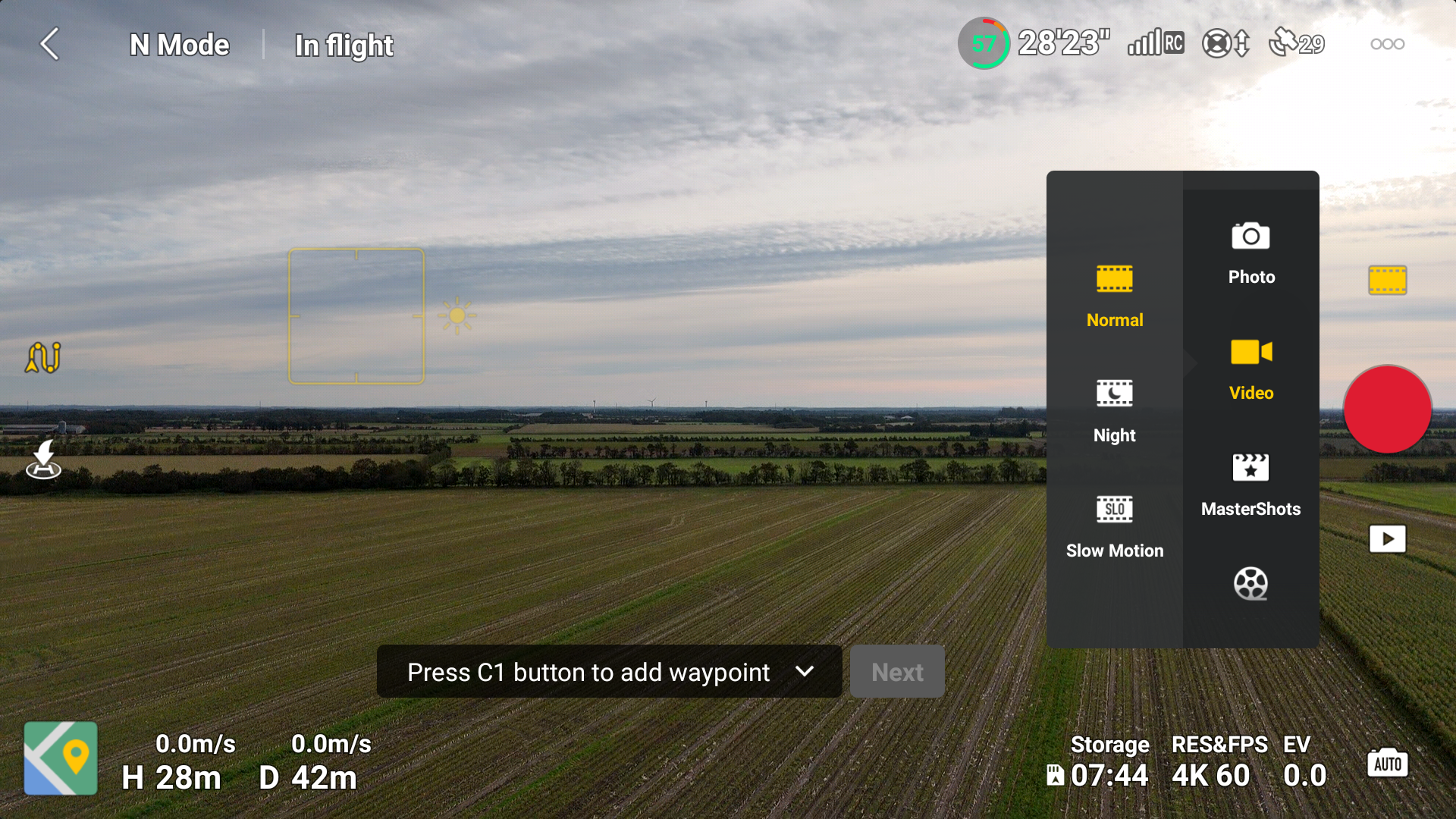
Every time the DJI Mini 4 Pro takes off, it saves its GPS position. So if the drone loses connection to you and the controller, or is about to run out of battery, it will automatically return home and land. In the same way, you can at any time ask it to return home to the starting point.
The DJI Fly software seems super robust and with a lot of functions that can appeal to both the beginner and the more trained drone operator.
I experienced no problems with the software during my testing. The upgraded DJI RC 2 units handle the software quickly and without problems.
A little about Danish/EU legislation
I will not go into great depth with the law here, but just take the time to mention it. There are quite a few rules in the area, and in the worst case scenario you can be punished if you end up violating the rules for drone flying, whether it is consciously or unconsciously.
A drone like the DJI Mini 4 Pro falls into the category of drones with the fewest regulations. This is primarily due to the very low weight. The dividing line is 250 grams, and the Mini 4 Pro stays exactly below that.
With a drone in this category, you can fly "most" places without having to have a special permit. “Most” places are in quotes here, because there are MANY exceptions to the general rule.
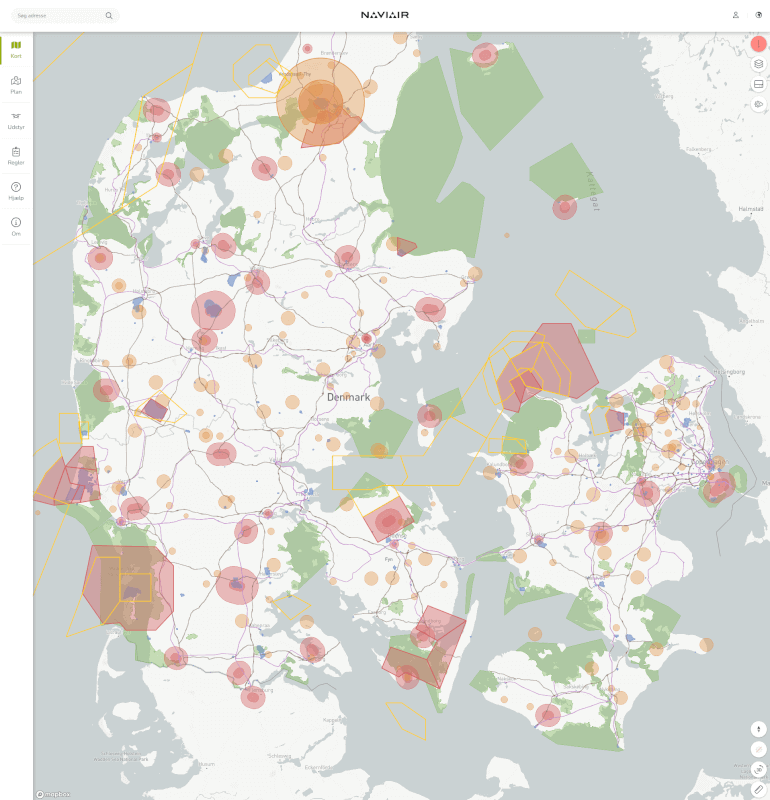
It is things like military areas, state and government buildings, embassies, etc. that you need to be aware of, in addition to airports and airfields of course. However, you must also be aware that some natural areas are protected and therefore also off limits.
This means that, for example, areas such as Copenhagen are very limited due to the many state and government buildings. It is 100% you as the drone operator who is responsible for keeping track of whether you are allowed to fly in an area.
There used to be an app where you could see the status of the area you were in. However, the Danish Transport Agency has since taken over the administration of this, and in that connection there is no longer an app that easily gives "live" access to Map. Instead, you have to visit the Swedish Transport Agency's website and check drone zones. You can do it right here www.droneregler.dk/dronezoner
It is also important to remember that there may be situations where the consent of unauthorized persons may be required. This can be the case, for example, if you fly in areas where you can enter people's private land, such as gardens or the like.
You should also be aware that even though the DJI Mini 4 Pro is one of the drones with the fewest restrictions, you must still be a registered drone operator in order to fly it. This applies to all drones that have a camera.
Fortunately, you can be registered quite easily, but it requires a little theoretical knowledge and you have to pass an online test. It can be found on the Swedish Transport Agency's website www.droneregler.dk
It pays to spend some time familiarizing yourself with the rules for drone flying. It is not exactly an easy web of rules to sift through. Through other work, I am used to reading legal texts and finding my way around public notices, and it took me a while to make sense of things. So if you want to be on the safe side, you should set aside some time for legal research.
The drone regulations are basically common European and apply throughout the EU. However, there may be additional rules in certain countries, so look out. Outside the EU, there may also be special rules that you must be aware of.
Testing
I have been testing the DJI Mini 4 Pro for over a month now, in slightly different contexts and it has been a pleasure from the start. DJI has made sure to make a drone that is incredibly easy to use. When you start up the drone for the first time, there is an option to get a small guide directly on the controller.
There is even a small guide for basic control, which helps to facilitate the process if you are new. That said, however, the task of flying a drone of this type is not the most difficult. If you have played even a little bit of PlayStation or Xbox, then it will probably feel very natural to some extent.
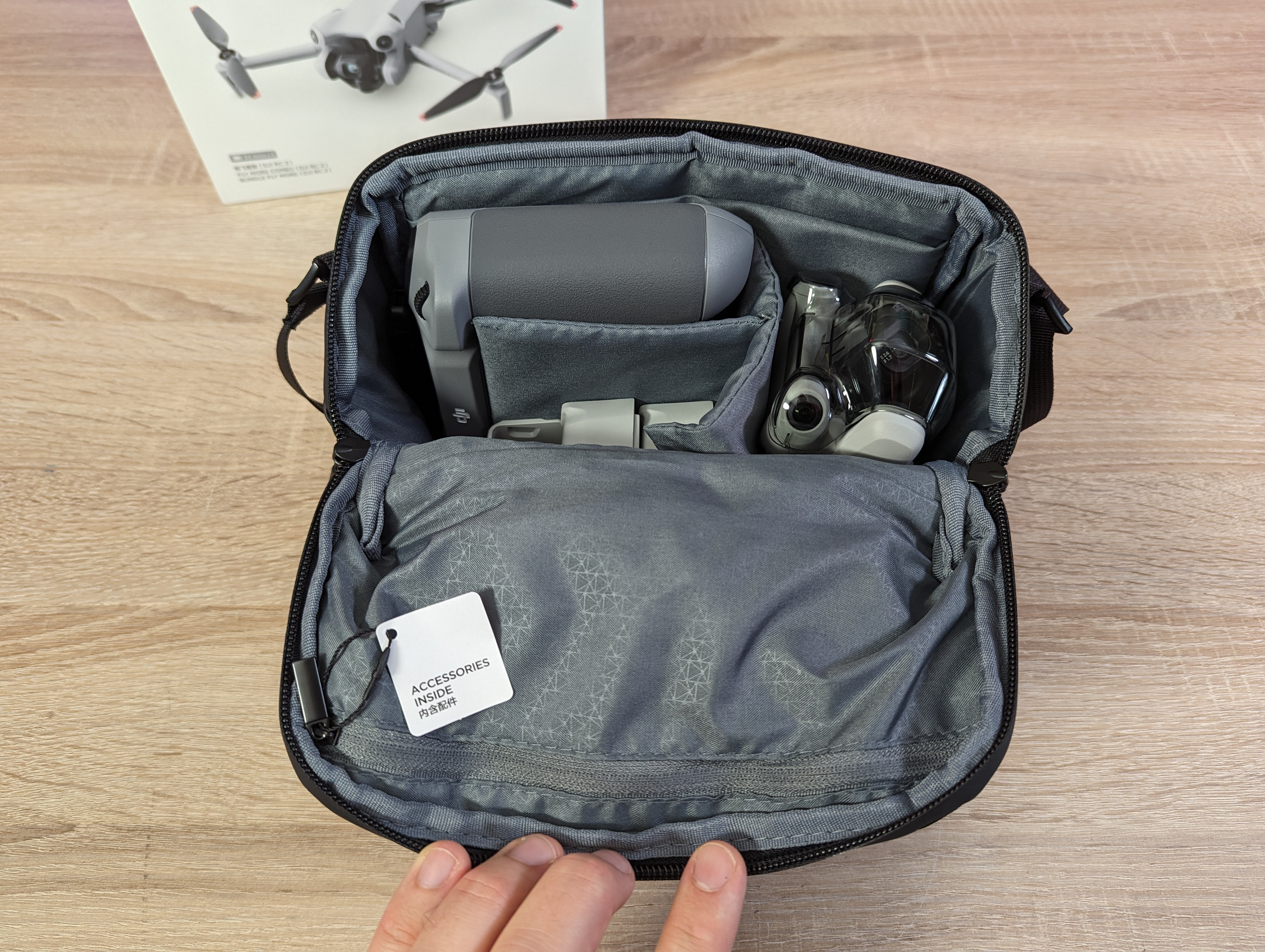
If you add on top of that the sensors in the Mini 4 Pro, which automatically ensure that you don't fly into obstacles, then you almost have to actively try to get off the wrong foot for that to happen.
However, you must remember that you can switch the sensors off, and then you are completely on your own. This is done, among other things, by selecting the S (Sport) setting on the controller. Then you unlock the full speed of the drone, but this happens at the expense of the sensors.
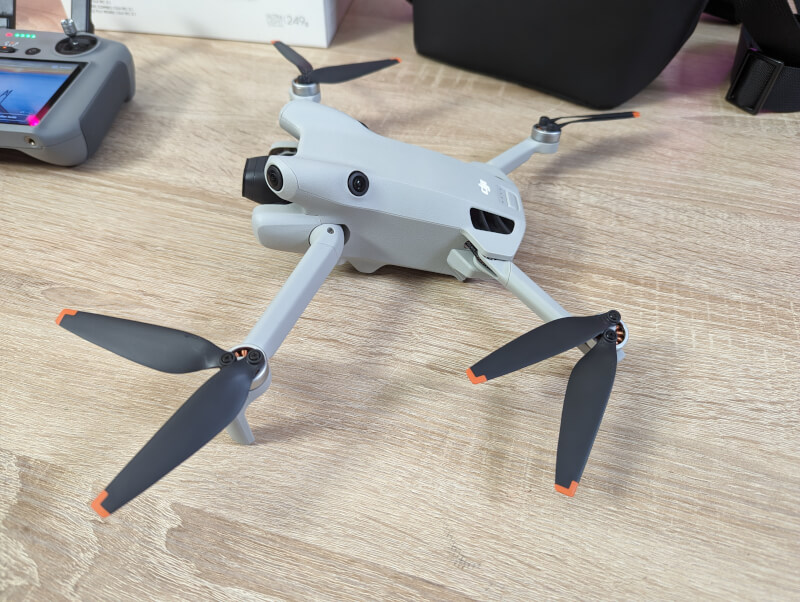
A detail that is worth remembering is to let the drone get a GPS connection before you take off. When it has established a GPS connection, it saves a Home Point, which it can then automatically return to if, for example, you are running out of battery or if you lose the connection between controller and drone.
With the new DJI RC 2 controller, DJI has even made an update to the software, so that on your video feed on the controller you get an overlay that shows which direction your Home Point is. It can be a great help if you have lost your sense of direction a little.
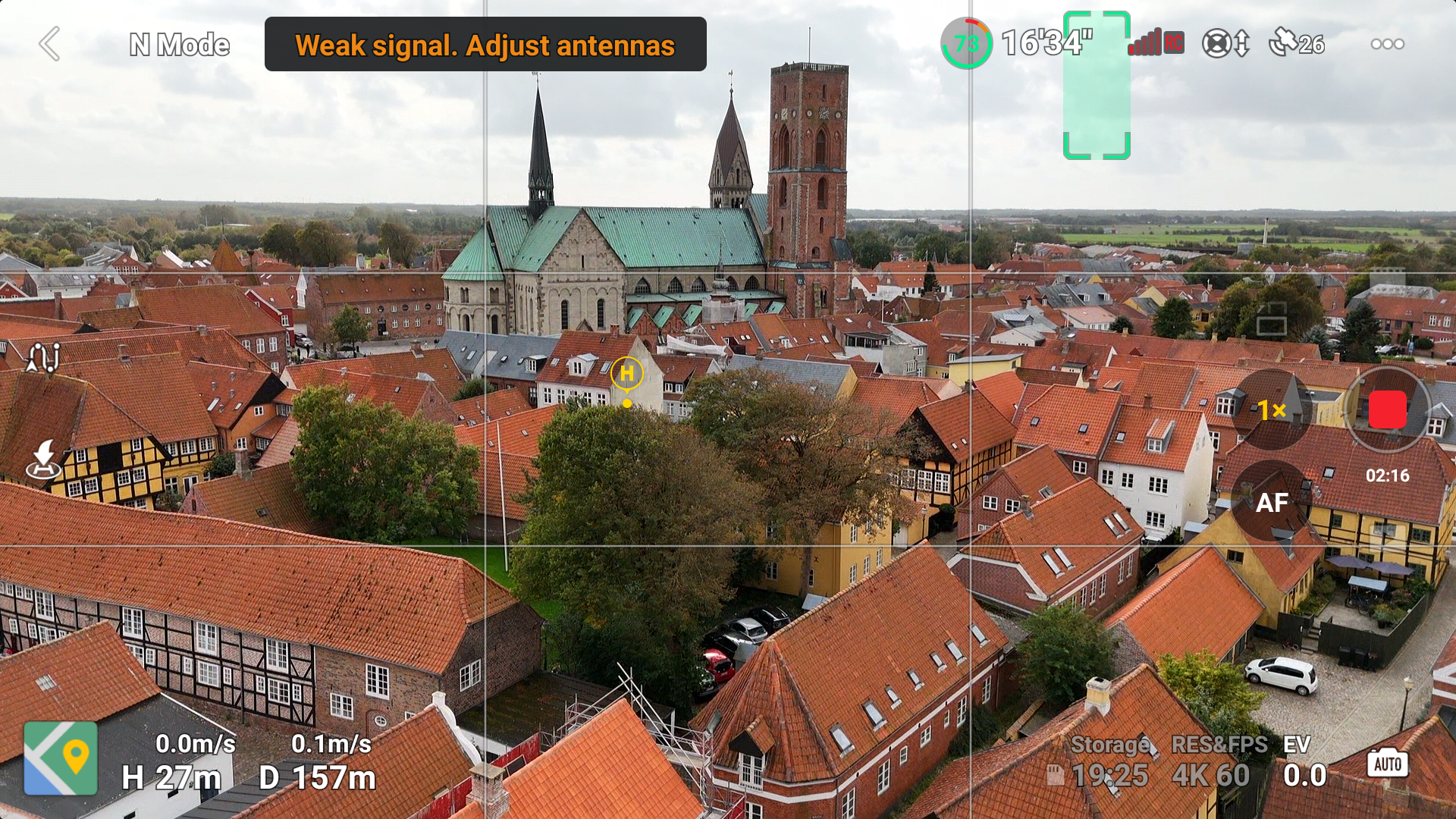
If the PlayStation fingers aren't quite in place yet, there are also a host of automatic functions that can be used with the Mini 4 Pro. There is, just as we have seen before, a selection of different automatic recording functions where the drone can be set to track a person or an object. It can then be used to make different flight patterns, such as Dronie, Rocket, Circle, etc.
See our test footage with the DJI mini 4 Pro below:
As we saw on the larger DJI Mavic 3 Pro, with the DJI Mini 4 Pro it is also possible to plan a flight route via waypoints and save it for later. It can be super practical if, for example, you want to make a timelapse video spread over several seasons or similar.
The camera is very important to most people who buy a drone, and here the DJI Mini 4 Pro certainly does not disappoint. It is possible to record up to 4K with a bitrate of 150 Mbps and 8-bit color or up to 10 bits if you use the HLG/D-Log M settings.
DJI is generally praised for their color profiles and I think that also applies here with the Mini 4 Pro. As a nice bonus, they are also good at keeping them the same across their different devices, so you can combine footage from e.g. the Mini 4 Pro with their Action 4 camera without the style being markedly different.
The flight characteristics are also really strong for a drone of this size. During my test period, I tested it well in the windy autumn weather. Even when I could see on the drone that it was struggling to stay stable in the wind, I got calm and stable images out of it, so DJI has done a great job with their Gimbal on the Mini 4 Pro. I was out several times flying in wind conditions that were actually above the recommended level and still got good pictures out of the trip. Automatic functions such as Return to Home and the like. however, does not work when there is strong wind.
Overall, it has been a pleasure to have the DJI Mini 4 Pro visiting. It is a good update for the Mini 3 Pro drone
Price
At the time of writing, I can find the DJI Mini 4 Pro in the Fly More Combo that we have had for testing, with an online price of just under 1,500$. If you buy the smallest option without extra accessories and the smaller RC-N2 controller, you can find it for around 1,000$.
Conclusion
With their Mini 4 Pro drone, DJI has made another small stroke of genius for the hobby user. My clear favorite among all the DJI drones I have tested to date was, until now, clearly the Mini 3 Pro drone, which has now been replaced in the Mini 4 Pro.
The low weight of less than 250 grams means that you can use it almost anywhere without many of the restrictions that come with the heavier drones. So you get a drone that you can actually use for something, which means a lot if you're the type who wants to comply with current regulations.
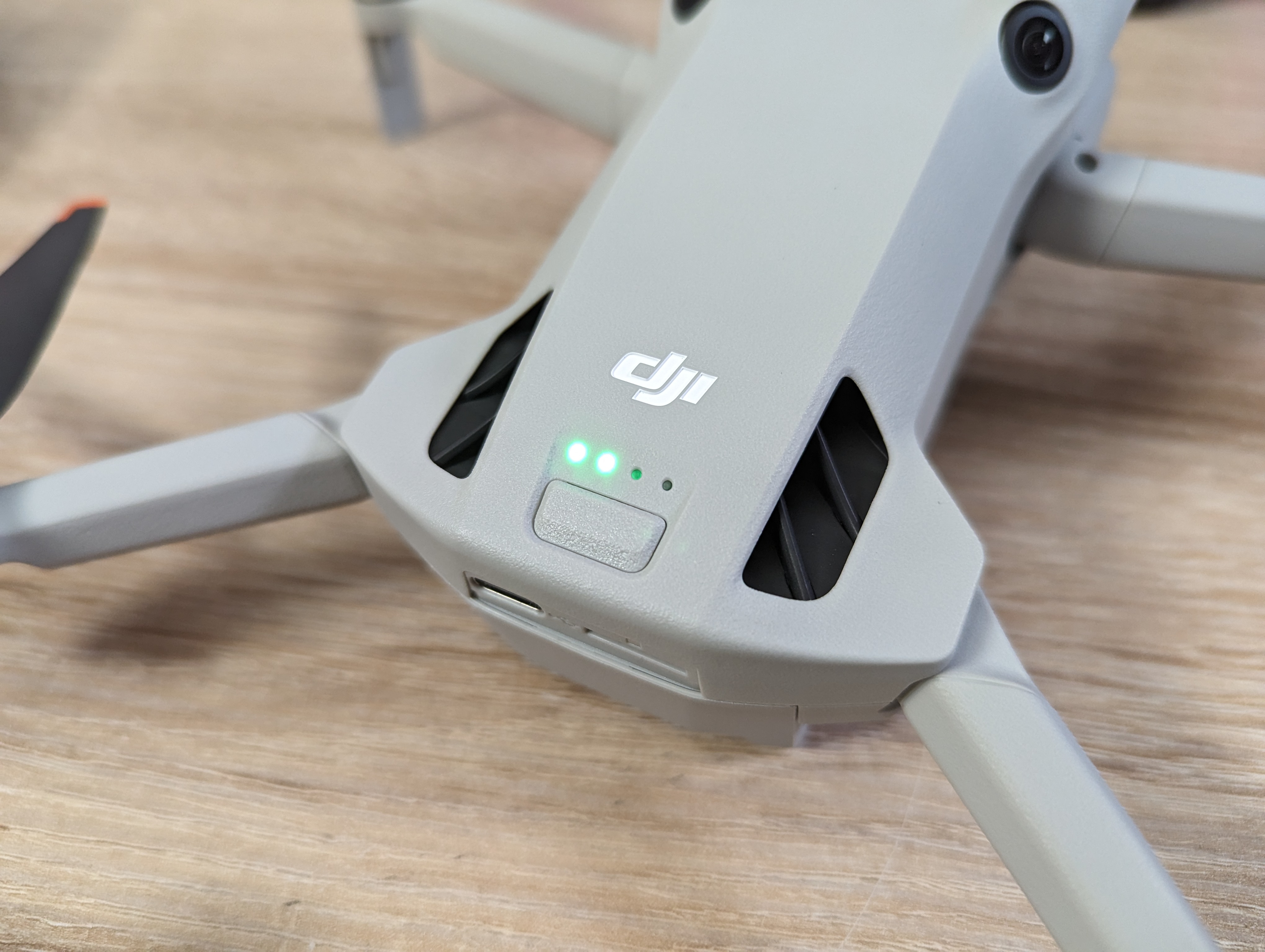
Despite the small size, DJI has squeezed a multitude of features into the small drone. The options for automatic start and landing, ActiveTrack and the many different automatic recording settings and not least Omnidirectional Obstacle Sensing means that you get a drone that is easy to use, but which can also give you some fantastic pictures.
The price may be a hard pill to swallow, but considering how much DJI has crammed into the little drone, I don't think it's unreasonable. It's an expensive but damn addictive hobby.
We land with a final grade of 9 and a Great Product Award, for a drone that is packed with features and that is aimed at both the discerning user and the happy beginner with a solid hobby budget.
Pros:
- Lots of features in a small package
- The automatic functions make the drone easy to fly
- Good sharp pictures
- Good software updates
Cons:
- Nothing noteworthy


Latest gadgets
-
19 Sepgadgets
-
23 Maygadgets
LaserPecker LP5 Laser Engraver
-
01 Maygadgets
Swytch launches Swytch Max+ Kit
-
10 Margadgets
DJI AIR 3S
-
03 Margadgets
Razer Wolverine V3 Pro
-
21 Febgadgets
OBSBOT Tiny 2 SE
-
13 Febgadgets
Corsair launches Platform:4
-
17 Jangadgets
Nerdytek Cycon3
Most read gadgets
Latest gadgets
-
19 Sepgadgets
DJI launches Mini 5 Pro
-
23 Maygadgets
LaserPecker LP5 Laser Engraver
-
01 Maygadgets
Swytch launches Swytch Max+ Kit
-
10 Margadgets
DJI AIR 3S
-
03 Margadgets
Razer Wolverine V3 Pro
-
21 Febgadgets
OBSBOT Tiny 2 SE
-
13 Febgadgets
Corsair launches Platform:4
-
17 Jangadgets
Nerdytek Cycon3






